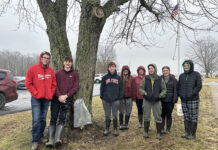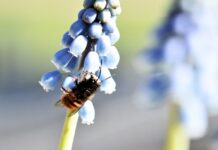There are many different hats worn by the staff of a local soil and water conservation district. The main role most people are aware of is protecting our natural resources as they relate to the environment through technical and education services.
This does encompass a majority of our work, but the roles and responsibilities of soil and water conservation districts, or SWCDs, go a lot deeper and broader than most individuals may be aware.
Ag-based
The roots of the SWCDs are based in agriculture. Even today, most roles are based and directed towards agriculture in one way or another, depending on where you live. Rural SWCDs will primarily focus on agriculture, soil testing, cover crops, assistance with the U.S. Department of Agriculture’s Natural Resources Conservation Service to the landowners, etc.
Urban and hybrid SWCDs, however, offer a mixed bag of services. This is not to say that rural SWCDs don’t also offer these type of services, but you will need to check to see what services are offered for your particular county’s SWCD.
Drainage assistance
Here, at the Mahoning Soil and Water Conservation District, a majority of our day-to-day operations entail drainage assistance calls with local residents. These can be rural, agricultural-based or urban neighborhood settings. Due to the demographics of our county, I would be willing to surmise that these are about a 40/60 split of agricultural-based drainage calls to urban-based drainage calls. Each one is unique unto itself based on a number of factors.
The optimum outcome is that the problem is solved with our available resources through information and technical assistance, or what we call ITAs, or best management practices.
If necessary (pending the findings of these site visits), the SWCD may need to bring in a state- or federal-level agency. There are many factors when considering what agency may need to be brought in to have jurisdiction, or final say, on the situation.
Other agencies
Some of the state level agencies that we, here at MSWCD, find ourselves working with almost on a regular basis are the U.S. Army Corp of Engineers (contiguous bodies of water), the Ohio Environmental Protection Agency (isolated pockets of water and a vast broader scope of environmental factors), Ohio Division of Natural Resources (wildlife, dams, dykes, gas wells and private wells), Ohio Division of Forestry (a sub-division of the ODNR that handles all timber-related aspects of logging, harvesting, improvements and technical assistance) and the USDA – NRCS.
NRCS offers cost share programs to private landowners for addressing natural resource concerns based on their respective properties.There is a plethora of information available for landowner’s to review, so you can see what programs are offered and the standard operating procedures of the EQIP/CSP programs.
CAUV
Not all of the SWCD’s services deal directly with the public. One of the larger responsibilities that the local SWCDs work on — at least here in Mahoning County — is in conjunction with the county’s local auditor’s office, the CAUV Program.
Each year, local SWCDs are tasked with site assessments for ensuring the integrity of the program. There are two parts each year to the site assessments. The first part is early in the year that focuses primarily upon the new enrollments. Then there are the summer inspections that focus on maintaining the integrity of the program to ensure agricultural programs are being followed and implemented by those enrolled.
One of the most common inquiries we receive at our office are by current and prospective residents who are interested in purchasing land. These individuals are doing their due diligence before purchasing a particular parcel to inquire if any sensitive areas are present on the property that could impede future plans with that property. It’s always good to do your homework before purchasing.
More services
I could go on for another few pages talking about what services the local SWCDs offer, but to keep it simple, I will list a few more.
Agricultural technical assistance, education (both in the classroom and to the general public), APAP (agricultural pollution abatement program — or as we like to call it, poop patrol!), assistance with NRCS in our prospective counties, assistance with the newly developed H2Ohio program to local producers, providing various resource mappings and other web-based informational programs to our residents, inspection of CAUV-enrolled parcels, grant-funded programs (Surface Water Management Program — backyard conservation) and tree, fish and pollinator seed sales.
A growing technical service that we find ourselves devoting increased time to is the county’s General Permit SWP3 Program, Stormwater Pollution Prevention Plan. In short, any earth disturbance over an acre must submit a SWP3 to be reviewed and approved by MSWCD and the county engineer’s office. The SWP3 program finds SWCDs working closely with the landowner, contractor and local zoning and, if needed, state and federal agencies if a delineation is needed to be concurred with. It is a set of checks and balances along the way to ensure that sediment erosion control is in place before, during and post construction. Due to the amount of urban sprawl in Mahoning County, it keeps us pretty busy.
Those are just a few things we at the SWCD do. Contact your local SWCD and see what they can possibly do for you — you may be surprised.













